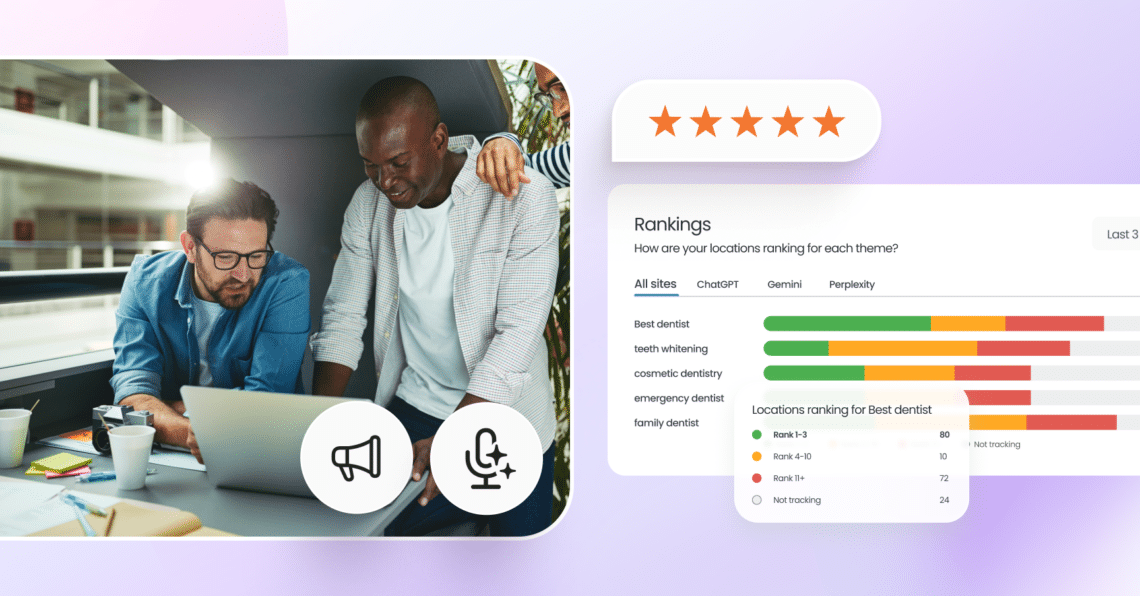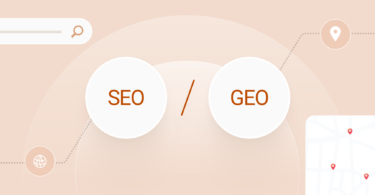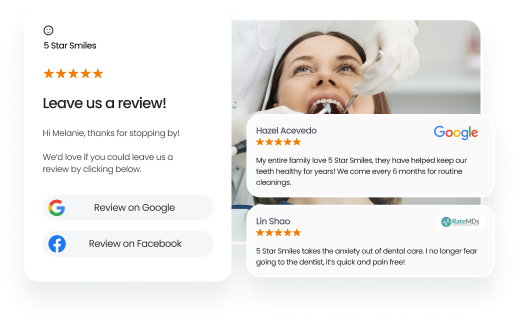AI Search Share of Voice (AI SoV) is a new metric that defines digital dominance, revealing which brands AI engines trust enough to cite as authoritative answers.
Summary
AI Search Share of Voice is the new battleground for digital visibility and market leadership. Unlike traditional SEO metrics, which track rankings and clicks, AI SoV measures how often—and how authoritatively—your brand appears as an answer in AI-generated search results. AI SoV is the clearest indicator of future market dominance, reflecting real-time brand trust as judged by AI assistants. Winning here requires more than keywords or ad spend; it requires unified authority-building across SEO, PR, and content. In short, your future market share depends on what AI says about you today, not just where you rank on Google.
Wondering what it takes for your brand to stand out in AI-driven search results? Follow along for practical frameworks, actionable tactics, and key measurement tips you can use to secure your position and win at AI search.
Table of contents
- Summary
- The impact of AI on SEO: Moving from clicks to direct answers
- AI Share of Voice vs. Traditional Share of Voice: Key differences for SEO
- How AI selects trusted brands in search results
- Best practices for measuring AI Search Share of Voice in search results
- Actionable tactics to improve your AI Share of Voice
- Practical steps to improve brand authority using AI SoV data
- Frequently Asked Questions (FAQs) about AI Search Share of Voice
- Final thoughts: Using AI Share of Voice to secure your market position
The impact of AI on SEO: Moving from clicks to direct answers
The most critical conversations about your brand are no longer happening on websites. They’re happening inside AI models. These interactions are private, invisible, and beyond the reach of classic web analytics. Here are a few trends that are worth noting:
- Consumers increasingly trust AI assistants for quick, direct answers, rather than scanning through 10 blue links.
- Old metrics, such as impressions and click-through rates (CTR), now miss the real source of influence: whether AI systems see your brand as credible enough to include in their answers.
- Brand authority is now shaped inside the “answer pipeline,” where AIs retrieve, shortlist, extract, score, and present responses in seconds. If your content isn’t aligned with how AIs process information, you may be excluded entirely.
Why does this matter?
Many brands are left out due to common failures, including slow-loading pages, buried facts, unclear entities, or mismatched taxonomies with actual user language. Visibility today is about aligning with how AIs evaluate and present authority, not just keyword targeting.

When AI models decide which brand to feature, there’s often only one clear “winner.” That brand dominates the conversation, while competitors risk being invisible.
AI Share of Voice (AI SoV) makes this dynamic measurable, surfacing which brands AI engines consistently trust to highlight as experts or solution providers. In a world where AI has become the gatekeeper, your market share tomorrow starts with how AI answers queries today.
AI Share of Voice vs. Traditional Share of Voice: Key differences for SEO
AI SoV isn’t about exposure alone. It’s about influence at the answer level. While traditional SoV tracks spend and impressions, AI SoV tracks how often your brand is cited, mentioned, or recommended within AI-generated answers across major platforms.
This shift reframes visibility entirely. You’re not competing for ad slots or rankings; you’re competing for inclusion in the AI’s final response.
| Type | What it means | Diagnostic tip |
| Direct answer | Your brand is given as a solution. | Screenshot showing your brand as the featured answer. |
| Secondary mention | Secondary mention Your brand is listed among experts or alternatives. | Brand is cited, but less prominently. |
| Used, no credit | AI uses your content or data but omits your brand name. | Brand appears, but no mention. |
| Not mentioned | Your brand is excluded entirely. | No inclusion in response. |
Key takeaway: Paid visibility won’t earn a place inside AI answers. Only credible citations, consistent proof, and verified authority signals can.
“Brands can no longer afford to ignore GEO. The search experience has moved beyond traditional search engines. AI engines now decide what people see. Birdeye’s Search AI gives multi-location brands the power to optimize their visibility, sentiment, and engagement across all platforms.”
— Adam Dorfman, AVP of Product Management and AI Search at Birdeye.
Birdeye Search AI makes this visibility measurable, tracking where brands appear, how they’re cited, and how that presence shifts across AI engines over time.
How AI selects trusted brands in search results
Modern AI models evaluate brands through a combination of signals designed to determine trust and authority, the key factors in determining who gets cited or recommended.
Here are the core signals that shape visibility:
- Citations: References from well-regarded, third-party sources, such as news media, respected directories, and expert forums.
- Freshness: Recently updated and relevant content, ensuring your brand’s information is up to date.
- Consistency: A unified brand narrative across all digital touchpoints—reducing mixed signals.
- Structured data: Schema markup and other machine-readable formats that help AI systems instantly “see” and understand your authority.
- Cross-platform validation: Repeated authority signals across independent sites and communities, reinforcing credibility.
Each major AI engine weighs these signals differently:
- Perplexity shows the most consistent citations and transparent sourcing.
- Google’s AI Overviews (AIO) now display a growing overlap between cited sources and top organic rankings.
- Other engines, such as ChatGPT and Copilot, vary in accuracy and depth, depending on the freshness of the data and the diversity of the sources.
These differences underscore the importance of a holistic strategy that keeps your brand visible and verifiable across all AI platforms.
AIs crave clarity. They cite brands that are easy to extract, reference, and understand. Many companies are used as examples in AI-generated responses but remain unnamed, losing visibility and trust in the process.
Pro tip: Conduct regular audits to identify where your brand appears, where it’s missing, and where it’s being used without credit.
Birdeye Search AI makes these trust signals visible. Its prompt-based audits and accuracy checks reveal how consistently a brand’s data appears across engines like ChatGPT, Perplexity, and Gemini, helping teams close visibility gaps faster. Strengthen those weak spots to maximize your authority footprint.

Best practices for measuring AI Search Share of Voice in search results
Counting brand mentions alone is a vanity metric. True measurement of AI Share of Voice requires understanding quality, context, and intent, not just frequency.
Here are the best practices for AI SoV measurement:
1. Intent-driven queries
Focus on high-value, bottom-funnel questions such as “Which platform is best for B2B payments?” instead of generic searches like “What is B2B?”. Align these prompts with revenue-driving moments where buying decisions are made.
2. Weighted scoring
Use the “reciprocal method” (1/place): 1st = 1 point, 2nd = 0.5, 3rd = 0.33, and so on.
Aggregate these scores in a master table to track your share versus competitors for each key query and AI platform.
3. Cross-AI benchmarking
Compare your brand’s scores across ChatGPT, Gemini, Copilot, and other major engines. Normalize results for differences in platform bias and ranking mechanics.
4. Competitive early warning
Regularly scan score tables to spot up-and-coming challengers before they hit traditional SEO dashboards.
Pro tip: Don’t rely on spreadsheets alone. Include screenshots of AI answers, your brand’s credited presence, and side-by-side comparisons across engines. This builds an auditable record of real-world visibility.
Actionable tactics to improve your AI Share of Voice
Winning at AI SoV isn’t about gaming algorithms. It’s about proving consistent authority that both humans and AI systems can verify.
Here are the key strategies to strengthen your presence across the answer layer:
1. Adopt an “answer-first writing”
Lead with a clear, factual, two-sentence summary at the top of each page. Use concise language that a middle-school reader—and an AI parser—can easily interpret.
2. Leverage structured data
Use schema markup (Products, FAQs, Events) so AIs can instantly identify and extract the key details that define your expertise.
3. Optimize Time To First Token (TTFT)
Your TTFT is determined by the platform’s hardware and model, not your company page. Since speed is crucial, a faster factual answer increases your chances of being used in AI-generated responses.
4. Optimize for citations
Strengthen your brand’s footprint through third-party mentions on authoritative media sites, review aggregators, and community forums. These external validations increase trust across AI engines.
5. Audit for consistency
Standardize your brand name, tone, and metadata across all properties. Mixed or inconsistent signals confuse AI systems and dilute authority.
6. Publish unique research and case studies
AIs prioritize sources that provide unique insights. Publishing original data, experiments, and thought leadership creates content that’s too valuable for AIs to ignore.
Key takeaway: AI SoV rewards clarity, authority, and originality. The brands that invest in precision, speed, and proof will own the answers—long before anyone clicks a link.
Practical steps to improve brand authority using AI SoV data
Treat AI SoV measurement not as a static KPI but as a dynamic coaching loop, a system that informs how your brand builds and maintains authority across the digital ecosystem.
Here’s how to operationalize it:
1. Measure your baseline share
Track your brand’s visibility and quality of presence across high-value prompts and leading AI engines. Establish where you’re credited, omitted, or misrepresented.
2. Identify weak spots
Audit for missing citations, slow responses, buried answers, and inconsistent entity data. Each of these can lower your authority score within AI systems.
3. Activate improvement sprints
Use insights from your audits to drive coordinated action across SEO, content, communications, and PR teams. Focus efforts on areas where AI visibility is weakest.
4. Respond publicly and transparently
If AI models misstate or overlook your brand, consider publishing factual updates, refreshing pages, or securing third-party validation to correct the narrative.
5. Operationalize reporting
Conduct monthly or quarterly “GEO audits” (Generative Engine Optimization). Track your inclusion, citation accuracy, and answer-layer prominence with real screenshots and examples.
6. Elevate to leadership metrics
Add “answer presence” as a formal KPI at the leadership and board level. This ensures AI visibility becomes a measurable part of brand health and digital equity.
For many multi-location brands, platforms like Birdeye Search AI now automatically power these “GEO audits,” surfacing where brands are cited, credited, or omitted—so teams can act faster and align around verified data.

Frequently Asked Questions (FAQs) about AI Search Share of Voice
AI Search ‘Share of Voice’ measures how frequently and authoritatively a brand is featured in answers generated by AI-powered search engines and assistants, reflecting overall brand visibility and digital trust.
While traditional SEO tracks search rankings and click-through rates, AI Share of Voice focuses on a brand’s presence in the direct answers and recommendations provided by AI platforms, making trust and authority more important than just keyword optimization.
Key factors include third-party citations, website structured data, fresh and consistent content across the web, and corroboration from diverse, independent sources.
Yes. Companies can use analytical tools to audit their presence in AI answers, identify gaps, and strengthen authority signals through strategic PR, content updates, and partnerships.
Achieving a high AI Share of Voice ensures that a brand is trusted and selected by AI assistants, leading to greater customer acquisition, market leadership, and protection against competitors gaining ground in the digital conversation.
Final thoughts: Using AI Share of Voice to secure your market position
AI SoV is now the heartbeat of brand strategy. Leading brands now track “AI answer presence” as a board-level indicator of visibility, credibility, and trust.
Brands ahead of the curve already conduct monthly inclusion audits across AI engines, refine content based on real answer data, and align PR, SEO, and communications under a single authority strategy.
Solutions like Birdeye Search AI help discover which queries matter, monitor answer trends, and drive presence where buyers actually make decisions. The future of search will belong to the brands that show up—named, accurate, and trusted—in the answers AI delivers. Those who fail to adapt will find themselves invisible in the moments that matter most.
Now is the time to act: measure your AI SoV, strengthen your authority signals, and align teams around a unified approach to answer-layer visibility. The next era of market leadership will be won or lost within AI search.

Originally published








